There are two kinds of people who eat oysters. There's the Charming-I-Love-Oysters person, and there's the I-Am-Trying-Too-Hard-To-Be-Sexy person. Reading this post turns you into the charming kind of oyster person.
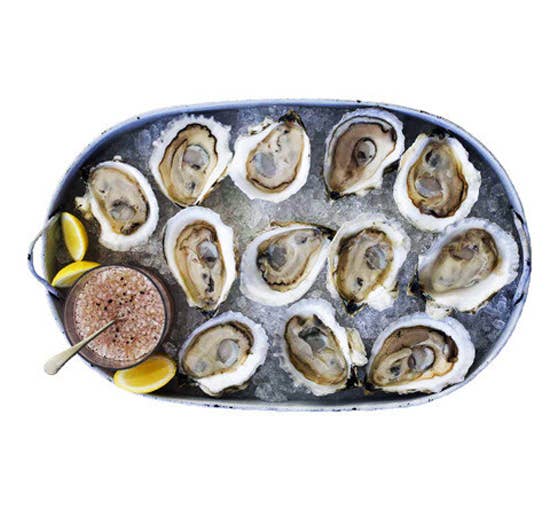
1. The r-month rule DOES matter.

Most people will tell you that the "r-month rule" doesn't matter anymore. They'll say that it's cool to eat raw oysters in a month doesn't have an "r" in it — like August — because it's safe. And sure, it is safe. But you know what? It's gross. Raw oysters aren't meant to be eaten then, so stop it.
“I basically inadvertently follow the r-month rule because they never taste good in the summer,” says Rowan Jacobsen, author of The Geography of Oysters and the best oyster website on the Internet, oysterguide.com. “It’s perfectly fine to eat oysters any time of year, unless you’re on the Gulf Coast, temps are too high in the summer there."
There was another reason for the r-month rule: It allowed them time to reproduce since oysters spawn in the summertime. On the Gulf Coast, where they still harvest wild oysters, they still have a set season for oystering. But everywhere else, baby oysters are “made” in hatcheries, so natural reproduction is not a real issue.
But still, oysters grown in cold water are better so just follow the rule.
(Note: The r-month rule is only important with raw oysters. Grilled or fried, oysters are about the same year-round.)
2. In cold months, there's nothing wrong with $1 oysters.
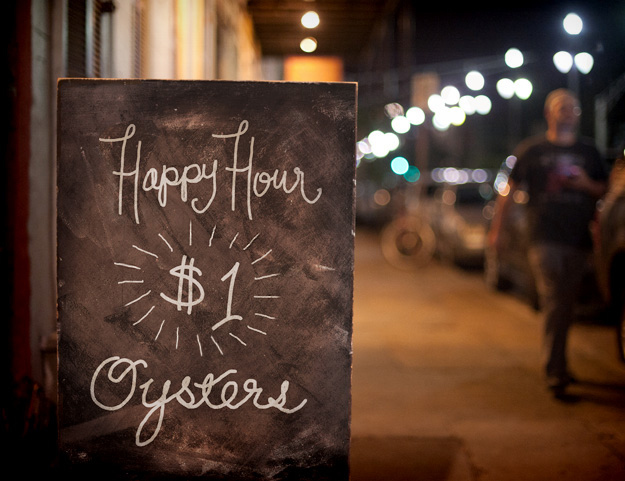
Just because a restaurant or bar is offering a deal on oysters doesn’t mean they’re gross or of a way lesser-quality. Some oysters are just significantly cheaper and easier to harvest than others. But do consider the time of year. “You can get perfectly good oysters for those deals especially, like right now in January when they’re all good on the east coast,” Jacobsen says. “You’re not going to get the real boutiquey oysters, but you can get perfectly good ones.”
3. Oysters are special so they get special words:
Don't say "oyster juice," say "liquor."
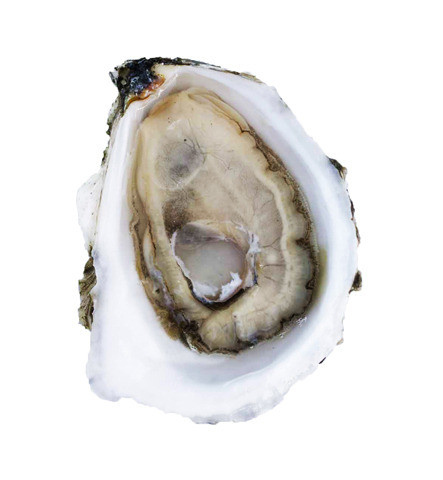
Oyster liquor is the natural juice inside the oyster that keeps it alive once it's out of the water. It is unacceptable to rinse or dump that juice out of the oyster before consuming it raw. That juice is precious and should taste amazing, and that’s why it’s referred to as liquor. It should be clear not cloudy.
Don't say "water" say "terroir."

It's a French word that you may have heard used with wine. Terroir (pronounced "tehr-wahr") means the characteristics of a place—its climate, geology, and wildlife, for example—that impact food produced there. Jacobsen says terroir affects the flavor of an oyster just as much, if not more, than it does wine because the effects are less subtle. "Oysters take on the exact same salt level or whatever water they're in," he says. So ocean oysters will be much saltier than oysters from the northern Chesapeake, for example. Other terroir elements that affect flavor include the algae in the water (because oysters eat algae) and the water's minerality.
Don't say "salty" say "briny."

They mean the same thing except briny is "salty the way sea water is salty." Typically speaking, East coast oysters are brinier than West coast oysters — especially oysters from Maine and Massachusetts — but there are exceptions.
Other good descriptors and when they apply:
"Sweet" — When the oyster is kind of mild and sweet instead of so salty, and often these come from the Pacific Northwest. Kumamotos are super sweet.
"Melon" — Washington oysters, often. Goes hand in hand with sweet in the case of Kumamotos.
"Creamy" — When the oyster is buttery and not as firm, and often happens with Pacific Northwest oysters. Kusshis are super creamy.
"Fresh Biscuit" — Beginners oysters that don't have a super-strong briny flavor, like Beausolais.
"Cucumber" — British columbia oysters, often. Fanny Bays have a cucumber finish.
"Plump" — Usually due to slow growth in nutrient/algae-rich water.
"Springy" — Usually due to cold, deep water like you find on the east coast.
"Copper" — When oysters have a very strong, acidic or rusty flavor.
And NEVER say "aphrodesiac."
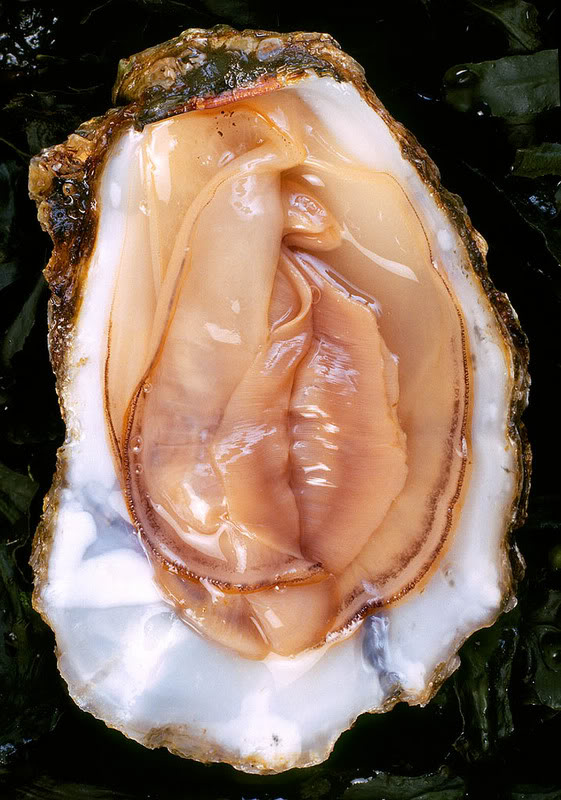
Yes, research shows that raw oysters are are "rich in rare amino acids that trigger increased levels of sex hormones." And yeah, sometimes they resemble female genitalia. And sure, some 18th-century dude named Casanova who says he slept with 122 women used to eat 50 oysters for breakfast. But that whole thing is just annoying and kind of gross, so don't talk about it if you want to be a charmingly quirky oyster person.
4. There are only 5 kinds of oysters.
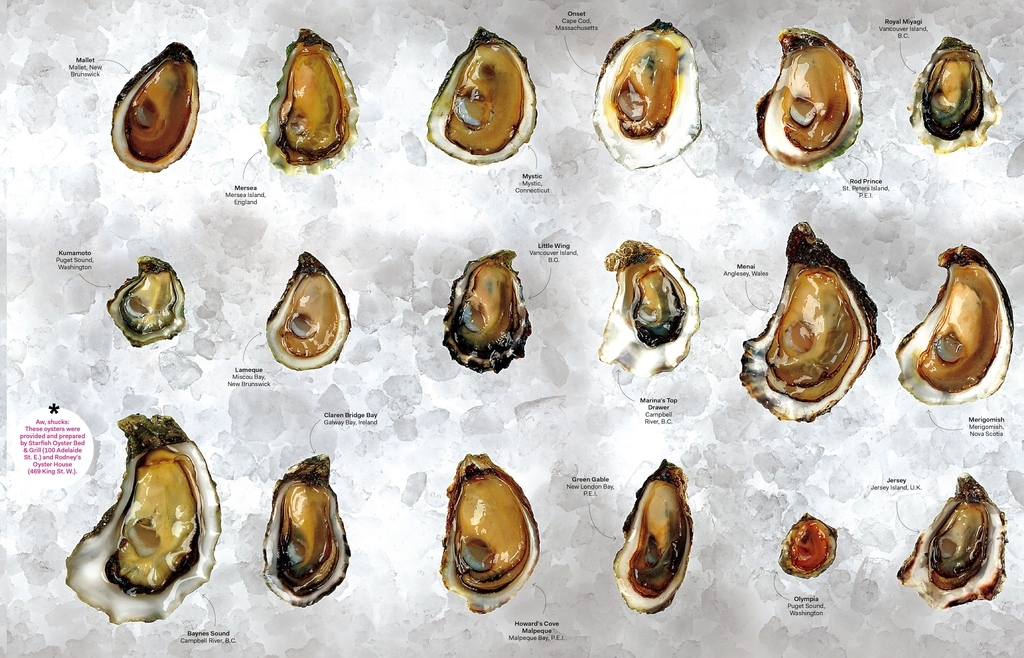
The oyster world seems overwhelming, but there are only five species of oysters in the world, and it's easy to tell one from another. Here's how:
NOT SO HARD TO GET
1. ATLANTIC
The ones that occur naturally from Canada all the way down the East coast and across the Gulf. Think Bluepoints, Wellfleets, Malpeques, Beausolais. Native to North America.
How to spot them: Smooth shell ridges, uniform in color tear-drop shape. Generally crisper, brinier, and savory (not sweet) finish.
2. PACIFIC
Most farm-raised oysters in the Pacific Northwest are Pacific oysters. They're Native to Pacific coast of Asia and were introduced to the US from Asia in the early 1900s.
How to spot them: They've got fluted, pointed shells that are usually rough and jagged. They're creamy and finish with fruit or vegetal flavors.
3. KUMAMOTO
This oyster used to be lumped in with Pacifics, but it was discovered that they are their own species. Introduced from Japan in 1947.
How to spot them: They are small and deep, like a little cup. Everyone loves them.
HARDER TO GET
4. OLYMPIAS
The only oyster species native to the Pacific Northwest. Almost wiped out during the Gold Rush in San Francisco.
How to spot them: Tiny — even smaller than kumamotos and more shallow — with more intense flavor. A little coppery.
HARDEST TO GET
5. BELONS
Named after the river in France that was famous for them and also called European flats.
How to spot them: They have a sharp intense metallic almost anchovy flavor that some people don't like, and like most things that are weird and rare, they are costly. Also their flavor really lingers.
5. And some are just better than others.
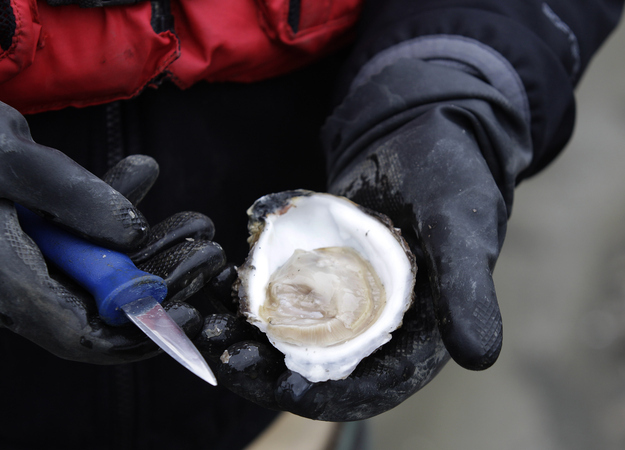
According to Jacobsen, these are the three most prized oysters in the country:
#1: Totten Virginicas: Totten Inlet, an oyster bay in Washington state, has a lot of great oysters. But the most prized are an East Coast species being grown there called Totten virginicas. "They have the springy texture of an Eastern oyster with the rich flavor of the Puget Sound," says Jacobsen. They are also notoriously hard to grow and may disappear soon. Read more about them here.
#2: Glidden Point Oysters: One woman oversees every single one of these and is a perfectionist about growing them slowly in very cold water. "Glidden Points are grown forty feet deep in the frigid Damariscotta, making them perhaps the deepest- and coldest-grown oysters on the East Coast," Jacobsen explains. Read more about them here.
#3: Apalachicola oysters: Northerners look down on Gulf Coast oysters, but this bay right off the bulge in Florida panhandle is one of the "oyster miracle places," Jacobsen says. "Apalachicola is the last place in the United States where wild oysters are still harvested by tongs from small boats." Read more about them here.
6. To get the best, order them in the mail.
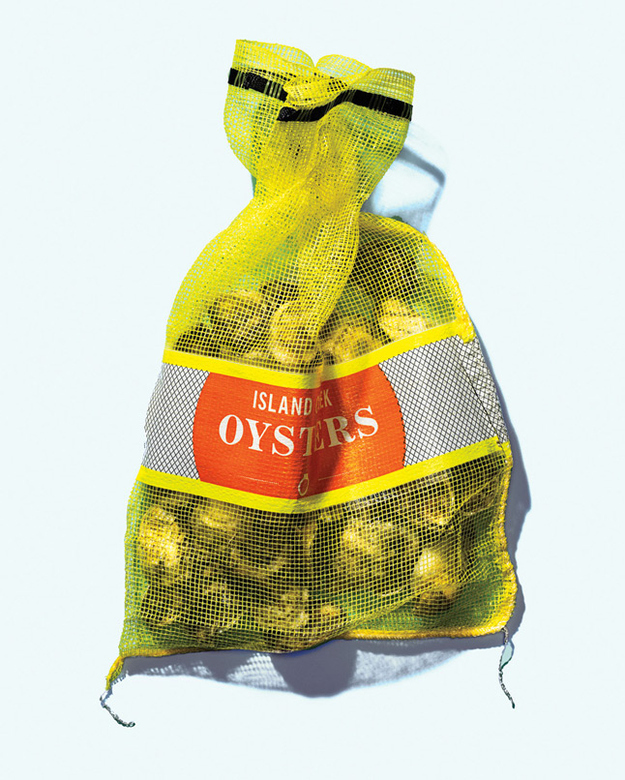
It sounds counter-intuitive, but the best way to get super-fresh, high-quality oysters is to order them directly from the growers who will FedEx them to you overnight or second-day delivery. "That way you know they are one, two or max three days out of the water and actually super fresh," Jacobsen says. Here is a list of growers to order from.
More tips:
1. Arrange to receive your oysters 1-3 days before you plan to shuck and serve them.
2. They need to be kept alive as you store them: Place them in an open container in the fridge then cover them with a clean wet towel to prevent them from drying out. Do not keep them in a bucket of sea water, in plastic bags or other air tight containers.
3. Shuck as close as possible to when you plan to eat them, and definitely not more than 2 hours beforehand.
And learn how to shuck them.
This is the oyster knife you should get.

Serve them with a mignonette.
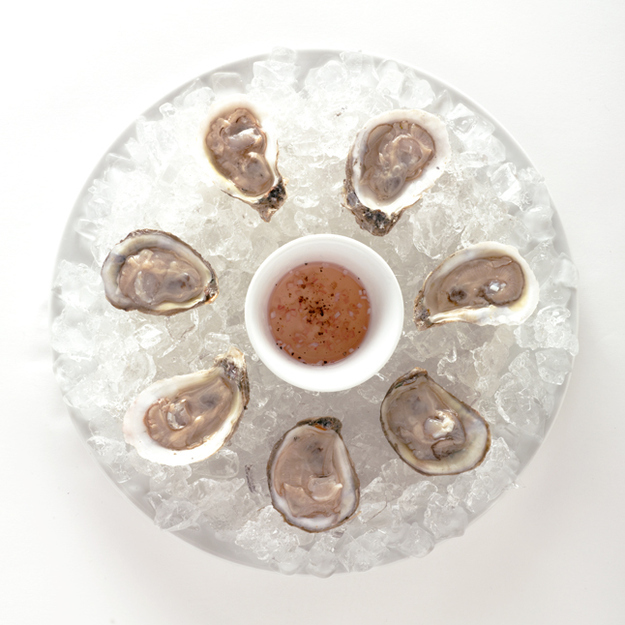
Other than a squeeze of lemon, there's almost nothing else you should be putting on an oyster, snob. Get a recipe.
7. Know about the Drakes Bay controversy.
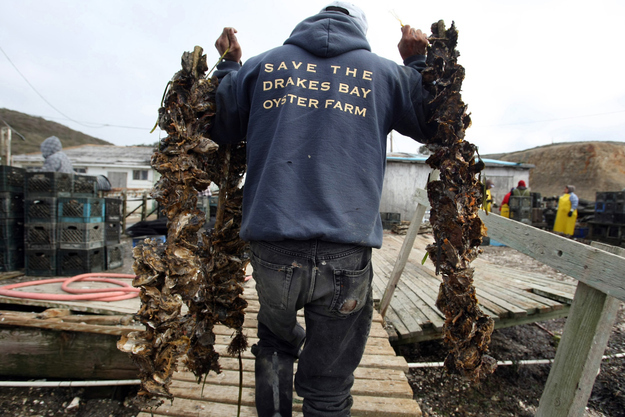
Here are the facts:
1. Drakes Bay Oyster Co. oyster farm is family-owned company in Point Reyes california that has been ordered to close by the National Park Service because their 40-year lease on the land has expired.
2. Backed by several environmental groups, the government plans convert those Northern California waters into a marine wilderness — the first of its kind in the US — untouched by human industry.
3. Drakes Bay's oyster farm supplies more than half the locally harvested oysters in the Bay Area market according to manger Scott Yancy's interview with the Wall Street Journal.
4. Some environmentalists say the oyster farm disturbs harbor seals, among other negative effects.
5. Jacobsen and many others believe that Drakes Bay is one of the best examples of sustainable oyster farming in the country, and takes great care to do restore a natural habitat.
6. Supporters of the farm also say oysters help the environment because they filter the water.
7. Oysters are definitely important for the environment.
8. Foodies and environmentalists all over the Bay Area are in crisis about it, for obvious reasons.
9. Drakes Bay is fighting the United States National Park Service in court.
Congratulations, now you know stuff about oysters!
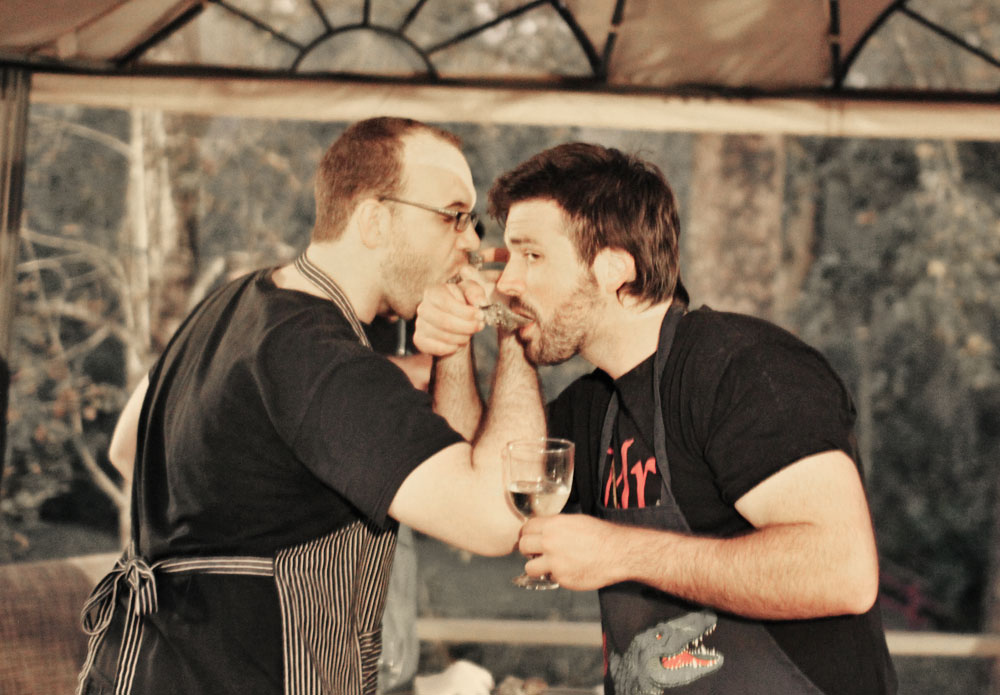
To take this to the next level, check out Jacobsen's book or the book History on a Half Shell.
